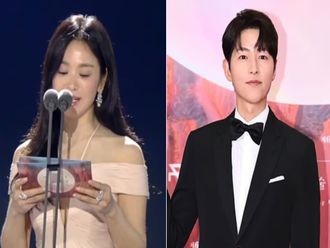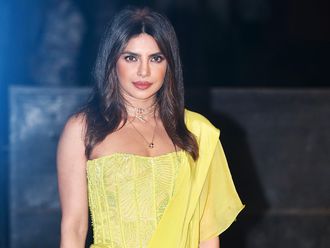Abu Dhabi: In a little corner nestled amid the arts and antiques exhibited at the Cultural Foundation in Abu Dhabi is a testament to the United Arab Emirates heritage.
UAE national women of various generations, dressed in abayas and gold-coloured burqas, sit among their crafts. Colourful and handcrafted carpets, baskets and dresses fill the corner where inquisitive tourists and long-time residents alike get a sneak peek at the UAE of yore.
"100 per cent Emirati, 100 per cent Handmade" is a project recently launched by the Abu Dhabi Authority for Culture and Heritage (ADACH), aimed at preserving and promoting traditional handicrafts to ensure their long-time survival, as well as their transmission from one generation to the next.
The women at the handicraft corner hold an important piece of heritage that helps cultivate the present generation's interest in local traditions, values and history.
Two women with kohl-rimmed eyes weave bright and vibrant carpets [sadou] using a device called Al Zaffa to hold the cotton threads. The larger carpets [on sale for Dh800] were used to cover camels' backs, while the smaller ones [Dh200] are used as decorative pieces for homes.
An elderly and chatty woman makes glittering Arabic lace [telli], the kind found on the collars and sleeves of women's traditional dresses.
Her face is lined with the signs of the times and her wrinkled hands alone could speak a thousand words; she speaks of the differences in generations and how the art of making traditional crafts is being lost.
She uses a metal device called a kajouja to hold the pillow on which she weaves the lace. Various lengths of the lace is on sale, and finished dresses are sold for Dh300 each.
Burqas are also on sale at the corner, and the elderly lady explains that less and less married women wear it as it can be cumbersome in their daily lives.
The inner part of the burqa is polished with an indigo stone (that can leave a mark on the skin), believed to have a beautifying effect on women's skin.
Both traditional and modern burqas are available, the newer models differentiating themselves by various coloured threads to hold them into place, whereas traditional ones only came with a red thread.
Nearby, another UAE national woman weaves palm tree fronds into a variety of household items, including baskets, food covers and mats. Having been dried out in the sun, palm tree leaves turn from green to white, and can be dyed into different colours to achieve diverse styles.
The braiding process [siffa] turns palm tree fonds into useful items such as small mats for fanning fires, bigger mats to serve food on, and large food covers used to protect meals from dust and flies.
Mohammad Khalaf Al Mazrouei, Director General of the ADACH, explains that the handicraft corner project aims to showcase the beauty of inherited folk arts and inspire people to translate them into modern arts.
"Formal and folk arts have the same roots, and most of the world's renowned artists have drawn their creative works from folklore," he said. "Craftsmen and folk artists deserve all the respect and recognition from us."













